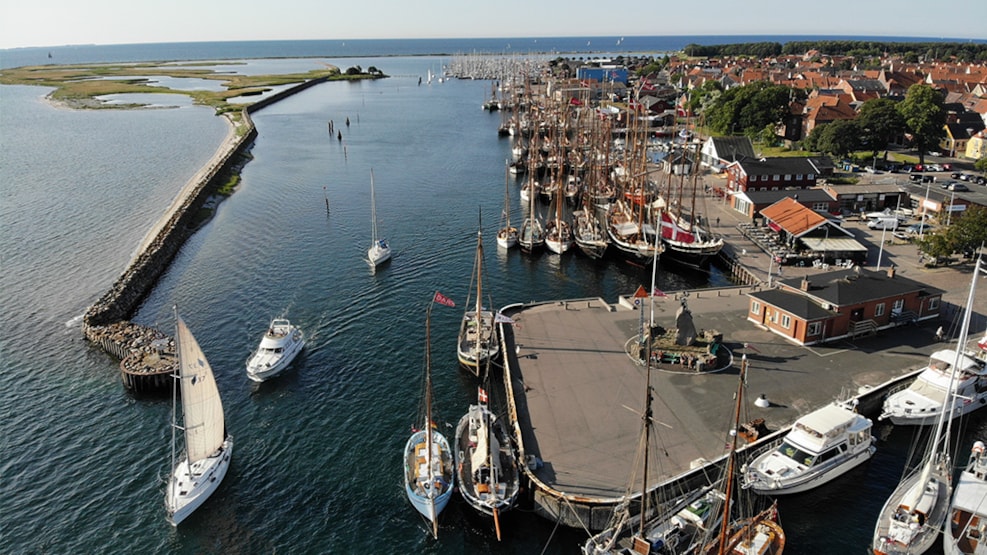
Geopark: Marstal Harbour
Marstal Harbor is originally a natural harbor, protected by a Holocene marine foreland, Erik's Tail, as well as several islets and shoals in the waters
These favorable circumstances appealed to fishermen who settled in a fishing village by the shore, the seed of the later maritime and shipping town of Marstal. The natural conditions, combined with its location on a "main road" between the Baltic Sea and the Archipelago, provided fertile ground for a growing shipping industry. The fleet grew and the space became too small for the many ships that sought winter shelter in their home port. The natural harbor needed to be expanded.
After a breakthrough by Erik Hale during an autumn storm in 1824, the self-reliant inhabitants began extensive pier construction in January 1825. As a starting point, the smaller sandbar, Holmen, was equipped with bulwarks behind which the ships' ballast was unloaded. At the same time, Holmen was renamed Frederiksholm, which today is better known as Kalkovnen, as there has also been a lime kiln on the island. The port authority originally had its tool house here, and ship repairs were carried out and a few newbuildings were launched from here.
The boulders for the pier construction, which were delivered by the ice age, were collected in the winter on land and in the waters of the surrounding area and dragged over snow and ice to the site where the pier was to be built. Construction took place in the winters of 1825-1841, when the majority of the pier was built. Later, the pier was expanded a few more times and thus the expanded natural harbor was the basis for Marstal's extensive shipping industry, which culminated around 1900 with a resident fleet of more than 300 cargo ships, one and a half hundred fishing vessels and 8 shipyards. Today, Marstal is a popular port of call for charter schooners and yachtsmen.